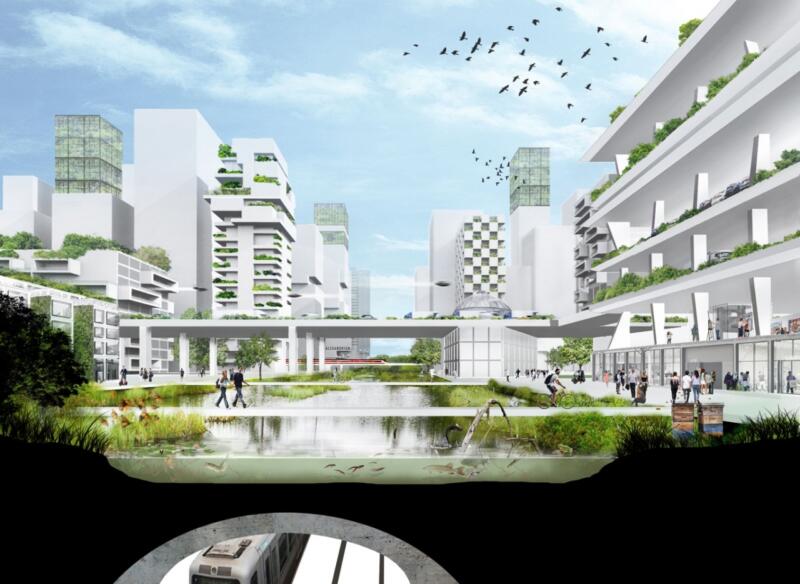CO₂ Performance Ladder: sustainable and circular procurement
The CO₂ Performance Ladder is an easy and effective tool that drives decarbonization and innovation. It serves as both a procurement instrument and a CO₂ management system with five levels. It helps governments buy green, giving sustainable companies a financial edge, and targets emission reductions within organizations and across entire business chains and sectors. Focusing on insight, reduction, transparency, and participation, it promotes the circular economy through collaboration. Higher levels require explicit cooperation, offering incentives for active CO₂ reduction and motivating companies more effectively than punitive measures.


VenhoevenCS goes for a future-proof city
Several organisations and cities are deploying the Ladder to reduce their CO₂ emissions while working on circular solutions. Venhoeven CS, architecture and urbanism is the first architecture firm with a level-5 certificate on the CO₂ Performance Ladder. Together with IMd Raadgevende Ingenieurs, they developed a sustainability matrix to demonstrate the shadow costs of a particular building element at an early stage of the design. With this data, architects and structural engineers can enter the discussion with the client to choose the option with the lowest CO₂ footprint. The tool is frequently used in urbanisation projects.
In the future city, circularity is pursued, among other things, by systematically using reusable materials and components. They make extensive use of demountable elements, which can be deployed on different projects. With one project, they are already thinking of the next. For instance, they already predestined parts from a sports centre, which was going to be demolished, for a sports centre to be built afterwards. In another project, they deliberately used untreated aluminium instead of traditional coated aluminium, so that it can be reused more easily later. This systemic way of working, together with their large investment in research and knowledge development, is how VenhoevenCS distinguishes itself from other architecture firms.’
Read the full case study here in Dutch.
The CO₂ Performance Ladder leads to more circularity
The CO₂ Performance Ladder is a procurement tool that demonstrably leads to more circularity.
RIVM has developed a method with TNO and environmental consultancy CE Delft to determine the impact of circular procurement on greenhouse gas reductions and raw material savings.
In tender studies where the CO₂ Performance Ladder was used as a circular procurement tool, this resulted in:
- Deployment of asphalt with more than average recycled content in the intermediate and top layers.
- A lifetime extension of approximately three years.
The effect of both measures was calculated and quantified.
The effect of Circular Road Procurement in 2017-2018 is estimated at 290,000 tonnes of avoided material use and a reduction of 24,000 tonnes CO₂-eq (in the case of office furniture, it was 470 tonnes of material use and 3,000 tonnes CO₂ -eq).
If all governments fully used all calculated measures for these two product groups, 654,000 tonnes less greenhouse gases would be emitted and almost 12 Megatonnes of material saved every year. So there is still much to be gained. The measures in question are life extension, application of recycled material and refurbishing.
